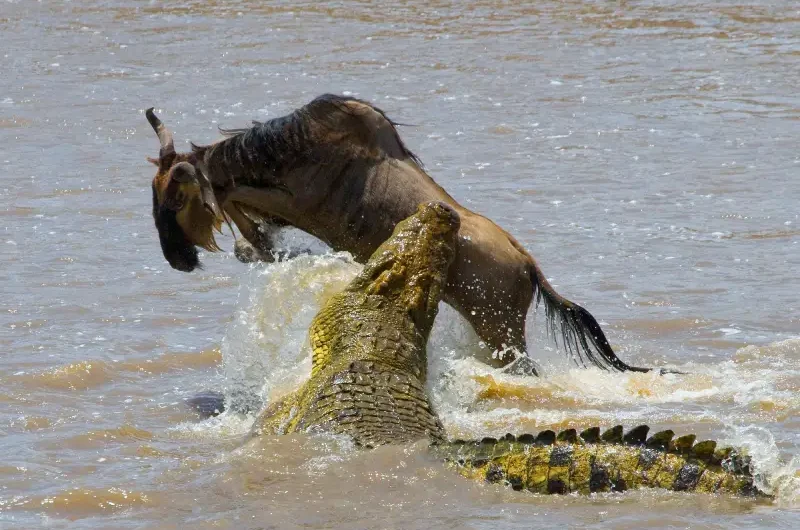The Thrill of Witnessing Predator Hunts in the Great Migration
The Great Wildebeest Migration in Kenya’s Masai Mara is one of the most extraordinary wildlife spectacles on Earth. Millions of wildebeests, zebras, and gazelles traverse the plains, pursued by an array of predators, including lions, cheetahs, and hyenas. For safari-goers, witnessing predator hunts during the migration is one of the most exhilarating experiences, combining raw nature, suspense, and the thrill of survival.
The Predators of the Masai Mara
The Masai Mara is home to the Big Five and numerous other predators that rely on the migration for food. Key hunters include:
- Lions: Often target the young, weak, or isolated wildebeests, hunting in coordinated prides.
- Cheetahs: Use speed and stealth to chase down zebras or young wildebeests across open plains.
- Hyenas: Opportunistic hunters that may follow other predators or hunt in packs.
- Leopards: Less commonly seen, but often ambush prey near trees or rocky outcrops.
Predator activity intensifies during the migration as the massive herds present abundant opportunities.
Understanding the Hunt
Witnessing a predator hunt is a lesson in patience, strategy, and nature’s balance. Key stages include:
- Stalking: Predators carefully approach their prey, often crouching low and using terrain for cover.
- Chase: The hunt begins with sudden bursts of speed, testing the prey’s agility and stamina.
- Capture or Escape: Success is uncertain; many hunts fail, illustrating the harsh realities of survival.
- Feeding and Scavenging: Successful predators feed while hyenas or vultures may wait for an opportunity to scavenge.
Even unsuccessful hunts provide incredible insight into predator-prey dynamics.
Why It’s Thrilling for Safari-Goers
- Raw Drama: Observing a hunt up close is a tense, heart-pounding experience.
- Educational Value: Learn about predator behavior, hunting techniques, and herd dynamics.
- Photography Opportunities: Capture dramatic action shots, from sprinting cheetahs to charging wildebeests.
- Rare Experiences: Witnessing a hunt is not guaranteed, making each encounter special and memorable.
Tips for Observing Predator Hunts
- Patience Is Key: Predators may spend hours stalking before a hunt occurs.
- Use Binoculars: Stay safe while observing predators from a distance.
- Listen to Your Guide: Experienced guides know predator hotspots and can position you for the best views.
- Keep Cameras Ready: Hunts happen quickly; be prepared to capture sudden action.
- Respect Wildlife: Maintain a safe distance and avoid disturbing the animals.
Best Time to Witness Predator Activity
Predators are most active during early mornings and late afternoons, when temperatures are cooler, and prey is more vulnerable. Peak migration months, from July to October, provide the highest chance of seeing hunts as herds move across the Mara plains and river crossings.
Conclusion
Witnessing predator hunts during the Great Migration is one of the most thrilling aspects of a Masai Mara safari. From the stealth of stalking lions to the explosive speed of cheetahs and the strategic opportunism of hyenas, these encounters reveal the raw beauty and drama of nature. For wildlife enthusiasts and photographers alike, observing predator-prey interactions adds excitement, insight, and unforgettable memories to a migration safari.


Comments